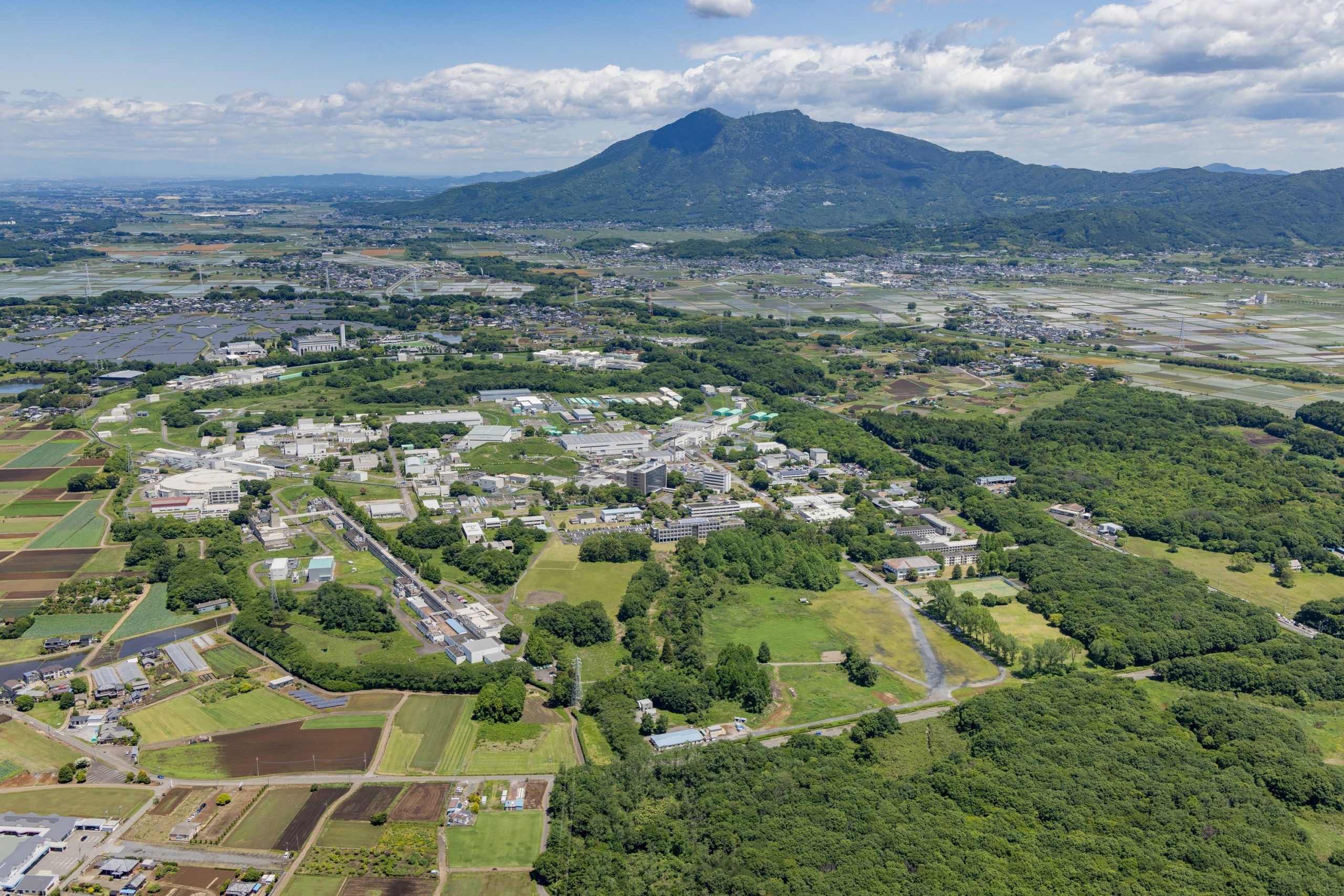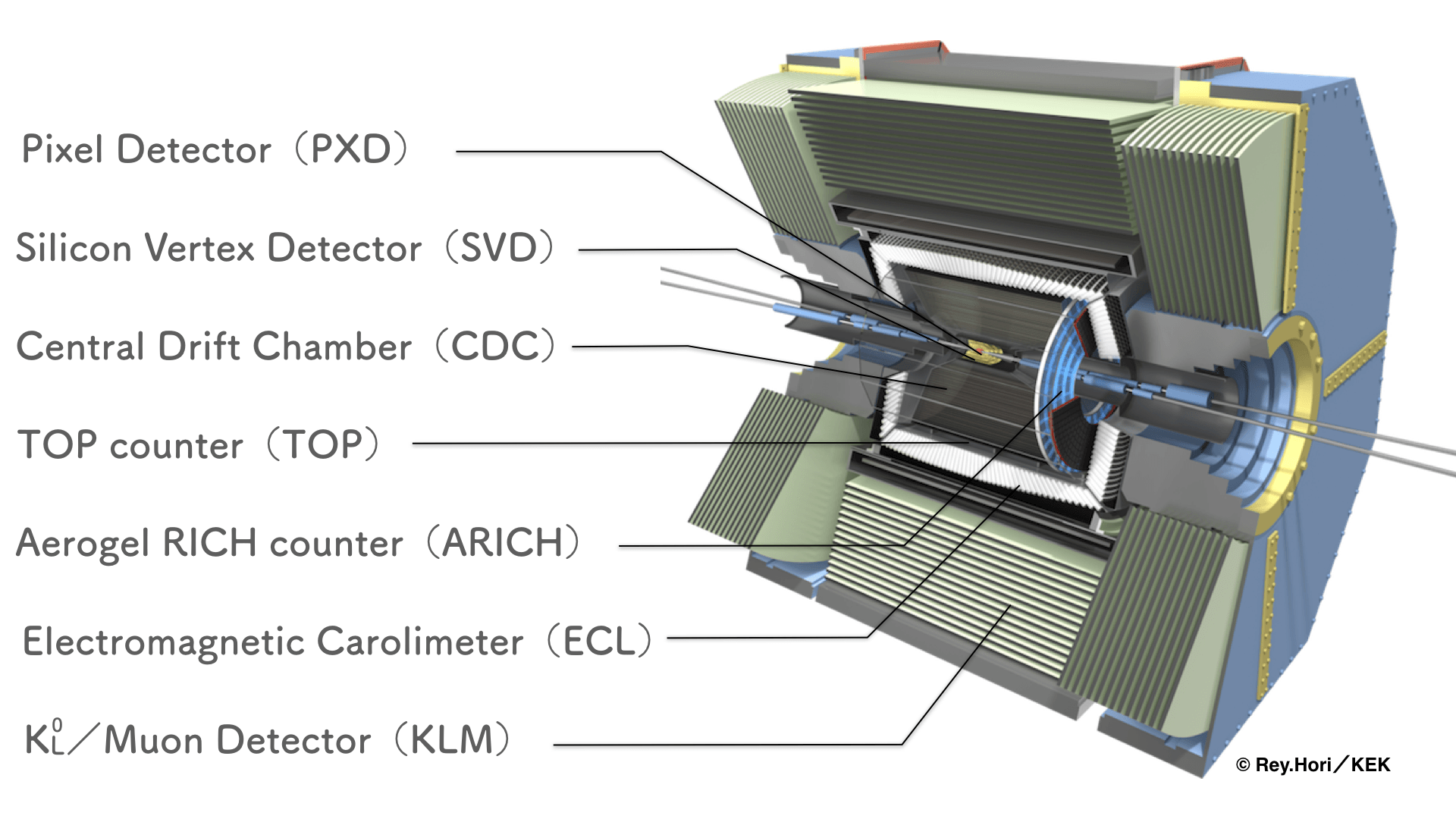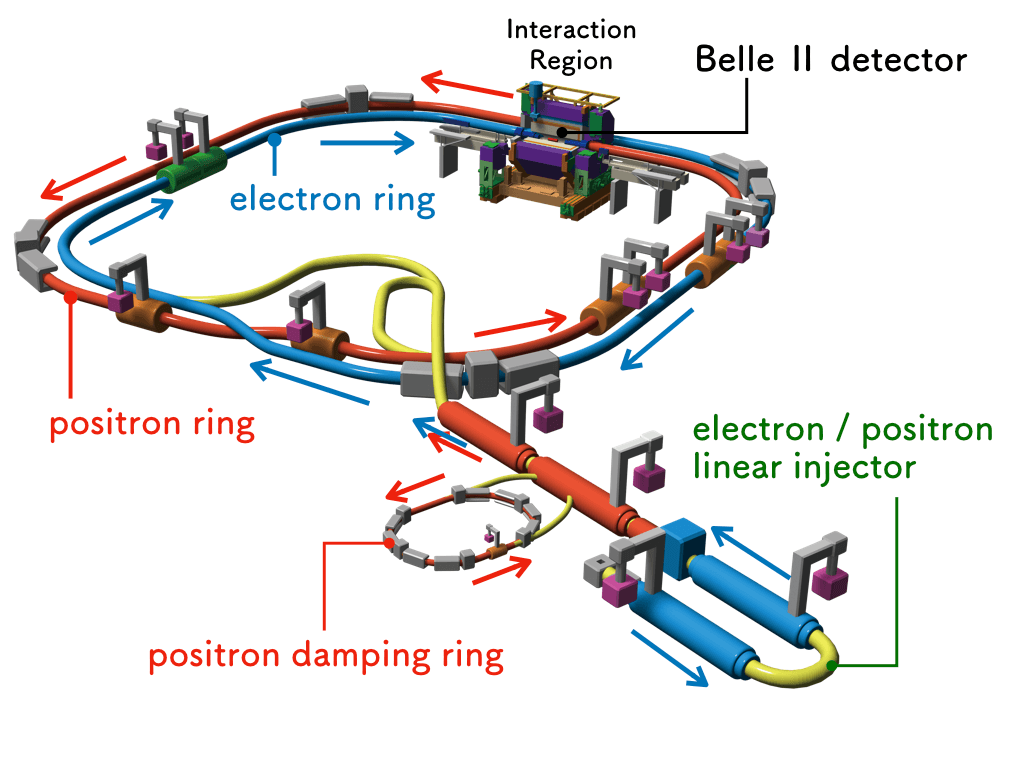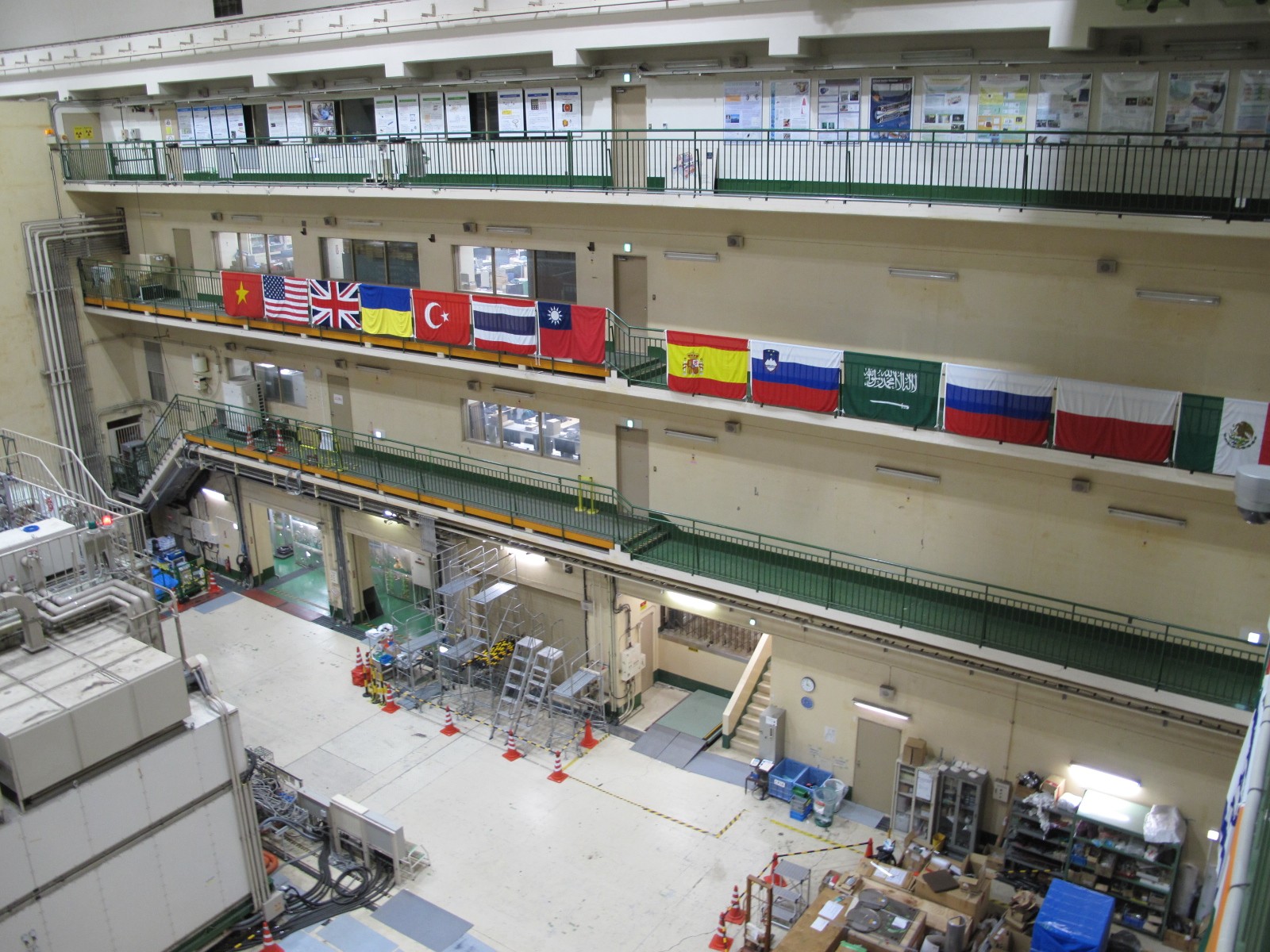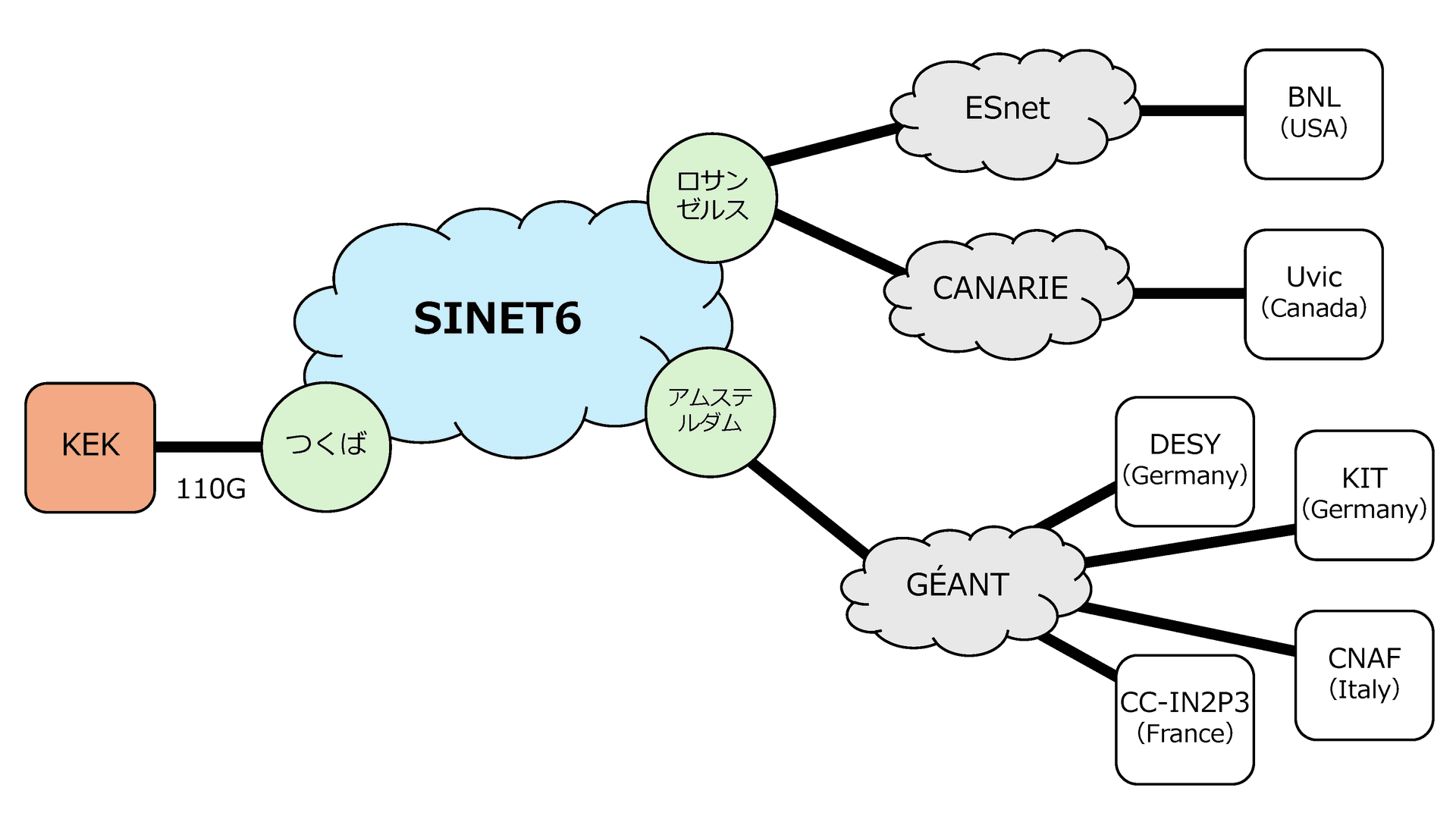
The Role of SINET6 in the Belle II Experiment
The Inter-University Research Institute Corporation High Energy Accelerator Research Organization (KEK) is a research institute that explores the origins of the universe and the roots of matter and life. It is conducting the Belle II Experiment: an international collaboration experiment that aims to search new physics. We interviewed Professor Takanori Hara and Associate Professor Ikuo Ueda of the KEK Institute of Particle and Nuclear Studies, and Professor Tomoaki Nakamura and Associate Professor Soh Suzuki of the KEK Computing Research Center about the outline of the Belle II Experiment and the role played by SINET. (Interview date: March 5, 2024)
Could you give us a brief overview of KEK, as an organization attempting to unravel the mysteries of the universe?
Hara:KEK is a research institute that promotes basic science using devices called accelerators. High-energy accelerators are devices that accelerate particles such as electrons and protons to near the speed of light to create high-energy states. In addition to conducting original research, we accept many researchers as an inter-university research institute corporation, and contribute to the expansion and sustainable development of human intellectual assets. In terms of organizational structure, the Institute of Particle and Nuclear Studies, the Institute of Materials Structure Science, the Accelerator Laboratory, the Applied Research Laboratory, the International Center for Quantum-field Measurement Systems for Studies of the Universe and Particles, and the Japan Proton Accelerator Research Complex (J-PARC) collaborate to conduct research.
It is believed that there was an equal amount of matter (particles) and antimatter (antiparticles)that have electrically opposite properties immediately after the birth of the universe.. These particles and antiparticles would have created and annihilated each other repeatedly. But the current universe is matter-dominated. To explain this phenomenon, we have come to think that antimatter ceased to exist as a result of slight symmetry breaking as the history of the universe progressed. The Kobayashi-Maskawa theory mathematically shows that the symmetry between matter and antimatter is slightly broken, which led to them receiving the Nobel Prize in Physics in 2008. This theory was proven correct by the Belle experiment, which was conducted using the particle accelerator at KEK from 1999 to 2010. At the same time, a new mystery emerged: the Kobayashi-Maskawa theory alone cannot explain the current matter-dominated universe. To search for the new physics beyond the Kobayashi-Maskawa theory, we went through improvements of the accelerator and measuring instruments, and in 2019 we started the Belle II Experiment.
To begin with, what is an accelerator?
Hara:An accelerator is a general term for a device that accelerates charged particles. In large-scale accelerator experiments, particles can be accelerated to almost the speed of light. The same principle used in accelerators is used in various familiar places. For example, electron guns are used in cathode-ray tube televisions, and in medical scenes, linear accelerators are used in external beam radiation therapy for cancer. The circular accelerator, so-called “SuperKEKB”, operated in KEK site, which has a circumference of around 3km. There, in order to understand phenomena that may have occurred in the early universe, particles (electrons) and antiparticles (positrons) are collided head-on to create pure energy state interpreted as a small Big Bang (mini Big Bang).
By observing this precisely with measuring instruments, the Belle II detector, we try to unravel the currently unsolved mysteries of the universe.
What kind of research is the Belle II Experiment? We would also like to ask you about the purpose of the research, and any updated points.
Hara:The Belle II Experiment is a large-scale international collaborative experiment with around 1,200 participating researchers from 28 countries and regions. Around 180 researchers from 13 universities in Japan are participating. In the original Belle Experiment, it was proven that the Kobayashi-Maskawa theory mentioned earlier is confirmed. However, this theory shows that the difference in the properties of matter and antimatter is so small, then leads to a new mystery that it cannot explain the matter-dominated universe we currently live in. In the Belle II experiment, using the SuperKEKB accelerator, we will artificially create Mini Big Bang events and investigate the matter and antimatter created as a result in detail, with the aim of discovering new physical laws and new particles that go beyond the Kobayashi-Maskawa theory, and approaching the mystery of how and why antimatter disappeared from our universe.
There are two things that have been updated. The first is to increase the luminosity, which represents the collision frequency, of the SuperKEKB accelerator by using higher current and narrowing the beam to a smaller size called a nanobeam. The second is to improve the performace of the Belle II detector, as described below. The SuperKEKB accelerator emits very high energy radiation due to its higher luminosity. To deal with this, we have made the detectors more radiation-tolerant and increased the granularity of the inner detectors directly exposed by radiation. In addition, other improvements have also been made, such as the better resolution of the particle identification detectors, a faster data acquisition system, and adopting the distributed computing model. As a result, by the mid-2030s, we expect to have collected 50 times as much data as the Belle experiment collected in the roughly 10 years operation from 1999 to 2010. The first period of operation was done from 2019 to summer 2022, followed by an 18-month shutdown to improve the performance of the accelerator and detector. Then the second period of operation has been resumed in February 2024 and continuing the data taking.
To conduct international collaboration, and collect and analyze massive amounts of data, it was necessary to strengthen the network, wasn’t it?
Ueda:Yes, the amount of data these days is getting very large, and we collect tens of petabytes (PB) of data each year. It is processed without delay, and within a few hours it is transferred to the collaborated data centers around the world for analysis. It is impossible to provide sufficient computing power to process whole huge data by only one facility. It is necessary to connect computers around the world via a high-speed network and analyze the data as if we were using a giant virtual computer on a global scale. This is called grid computing. In order to share and distribute data internationally, it was necessary for us to have a network with sufficient bandwidth, low latency, and stable operation separated from general communications (Figure 1).
As a network that satisfies these requirements, it was essential for us to use SINET, which enables communication with KEK, domestic universities, and overseas research institutes.
Research and education networks in each country are collaborating to build an international network that is separate from the Internet. ESnet, CANARIE, and GÉANT are research and education networks located in the United States, Canada, and Europe, respectively.
The Worldwide LHC Computing Grid (WLCG) has constructed LHCONE which is a private network built on VPN services of NRENs to connect WLCG sites . It is dedicated to LHC data transfers and limited to IP addresses declared by each site. Since many of the cooperating research institutes participating in the Belle II Experiment are also participants in the WLCG, it was hoped that they would also participate in LHCONE for the Belle II Experiment. We have also set up the data centers to store the raw data output by the Belle II detector at KEK, in North America, and in Europe. A high-speed, low-latency, stable 100Gbps network connection between Japan, the United States and Europe was essential for data distribution and preservation.
So, the SINET network environment plays an important role in data collection?
Storing raw data comes with heavy responsibilities. Even when the experiment is over, it is necessary to be prepared for changes in judgment criteria or oversights later on. The experiment data is not exactly the same depending on the timing of collection, and resources such as personnel and electric power are required to operate the accelerator. Since the experiment also has a long-term span of 20 years, it is necessary to store massive amounts of data. Data is stored in a distributed manner on a global scale, and the design of the computing model must consider this. To conduct international collaboration in this way, it is necessary to develop a world-class network environment. Since Belle II is an experiment involving researchers from 28 countries and regions, it is essential to have an environment in which the participating researchers can analyze the data freely and equally. SINET plays an important role in this. I feel that it is because of SINET’s stable, high-speed, low-latency network infrastructure that we have been able to conduct research at a level comparable to that of the United States and Europe with the Belle II Experiment.
Tell us about your outlook for the future in that area.
Operating an accelerator requires running costs, and the amount of data collected tends to become large in the recent experiments. The costs are too large to be covered by a single country, therefore, it is natural that the recent and future experiments are formed as international collaborations. Large-scale international experiments such as the Belle II Experiment will not succeed if any part of the system—whether it be the accelerator, detector, data processing system, network, or software—is missing. We resumed beam runs in February 2024, and eventually expect to collect nearly 200TB of data every day. To analyze simulation data commensurate with this and lead to research results, the network component is becoming increasingly important.
By connecting to SINET, KEK has been able to achieve a stable, high-speed data transfer. And we would like to take on the challenges of new physics by analyzing large amounts of data quickly and in detail, and approaching the as-yet unsolved mysteries of the universe.

